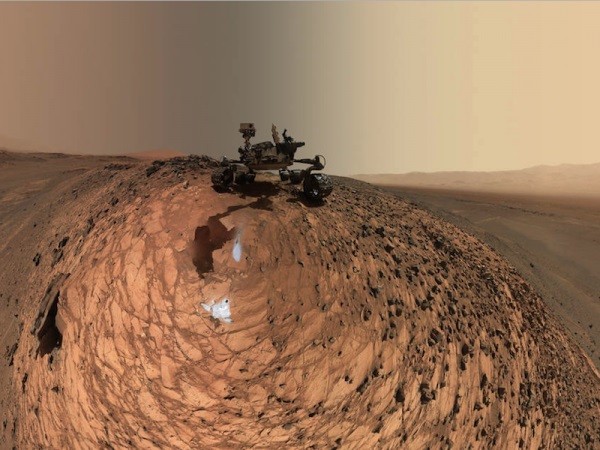-
Tips for becoming a good boxer - November 6, 2020
-
7 expert tips for making your hens night a memorable one - November 6, 2020
-
5 reasons to host your Christmas party on a cruise boat - November 6, 2020
-
What to do when you’re charged with a crime - November 6, 2020
-
Should you get one or multiple dogs? Here’s all you need to know - November 3, 2020
-
A Guide: How to Build Your Very Own Magic Mirror - February 14, 2019
-
Our Top Inspirational Baseball Stars - November 24, 2018
-
Five Tech Tools That Will Help You Turn Your Blog into a Business - November 24, 2018
-
How to Indulge on Vacation without Expanding Your Waist - November 9, 2018
-
5 Strategies for Businesses to Appeal to Today’s Increasingly Mobile-Crazed Customers - November 9, 2018
Selfie Mania continues: NASA’s Curiosity Mars Rover shares some wonderful selfies
The Curiosity Rover took an epic, one-of-a-kind selfie a little before it resumed its odyssey atop one of Mars’ huge mountains, according to an article posted on NBC News.
Advertisement
Curiosity rover can take its selfies with the camera at the end of its robotic arm. The rover’s on-board systems are now analyzing powder samples collected from the rock target called “Buckskin” in the “Marias Pass” region of the red planet. [Latest fantastic Mars Photos by NASA’s Curiosity Rover].
Since finishing its drilling at Maria Pass, Curiosity has been climbing through the lower reaches of Mount Sharp, an area it has been at since September 2014. Over the past few days, the rover has traveled 433 feet, rounding out its total distance traveled since its August 2012 landing to 11.1 kilometers. For monitoring hydrogen beneath the ground, the Curiosity has a Dynamic Albedo of Neutrons (DAN) instrument.
The rover drilled into a Marias Pass rock dubbed Buckskin, collecting powdered samples for future analysis by its onboard instruments.
Curiosity examined the Marias Pass contact zone closely with instruments mounted on its mast and arm. It has been detected at low levels everywhere Curiosity has driven and is interpreted as the hydrogen in water molecules or hydroxyl ions bound within or absorbed onto minerals in the rocks and soil. The measurements from this test confirmed the presence of more hydrated material in this area.
“We were pleased to see no repeat of the short circuit during the Buckskin drilling and sample transfer”, Steven Lee, deputy project manager for Curiosity at NASA’s Jet Propulsion Laboratory in Pasadena, California, said in the same statement.
Advertisement
Mission scientists say the climb, and Curiosity’s observations as it goes, will allow them to obtain a history of the changing environmental conditions the area may have experienced.





























